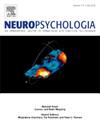Language processing in emergencies recruits both language and default mode networks
IF 2
3区 心理学
Q3 BEHAVIORAL SCIENCES
引用次数: 0
Abstract
Effective language processing in emergencies is crucial for professionals, including firefighters, soldiers, and doctors. Substantial research has been undertaken on language processing in silence, with several studies indicating the impact of noise on language processing in non-emergencies. However, it remains unclear about the neural mechanisms involved in language processing during emergencies, especially the role of the language network (LN) and the default mode network (DMN) in such contexts. In this study, we adopted functional near-infrared spectroscopy (fNIRS) to investigate brain activities of 60 participants who were performing language processing tasks in simulated high-emergency and low-emergency scenarios. Compared to the resting state, the reading task demonstrated reduced activation in bilateral superior and middle frontal gyri (SFG/MFG), components of the DMN, alongside enhanced activation in Broca's area, left temporal lobe and left inferior parietal lobule (IPL) – key LN regions. Furthermore, the activity of the left MFG was positively correlated with the level of stress experienced by participants during the task. Additionally, a positive correlation was identified between language processing performance and activation of the left MFG, exclusively in the participants exposed to high-emergency scenarios. These results support the view that language processing during emergency relies on both the LN and DMN. The current study deepens our understanding of the neural mechanisms that underlie language processing in complex, real-life emergency scenarios.
紧急情况下的语言处理需要语言网络和默认模式网络的共同参与
在紧急情况下有效的语言处理对专业人员来说是至关重要的,包括消防员、士兵和医生。人们对无声环境下的语言处理进行了大量的研究,有几项研究表明噪音对非紧急情况下语言处理的影响。然而,关于紧急情况下语言处理的神经机制,特别是语言网络(LN)和默认模式网络(DMN)在这种情况下的作用尚不清楚。在本研究中,我们采用功能性近红外光谱(fNIRS)研究了60名参与者在模拟高紧急和低紧急情景下执行语言加工任务的大脑活动。与静息状态相比,阅读任务显示双侧额上回和额中回(SFG/MFG) (DMN的组成部分)的激活减少,同时布罗卡区、左颞叶和左顶叶下小叶(IPL) - LN的关键区域的激活增强。此外,左侧MFG的活动与参与者在任务期间所经历的压力水平呈正相关。此外,语言处理表现与左侧MFG的激活之间存在正相关,仅在暴露于高度紧急情景的参与者中存在。这些结果支持了紧急情况下语言加工同时依赖于LN和DMN的观点。目前的研究加深了我们对复杂的、现实生活中的紧急情况下语言处理的神经机制的理解。
本文章由计算机程序翻译,如有差异,请以英文原文为准。
求助全文
约1分钟内获得全文
求助全文
来源期刊

Neuropsychologia
医学-行为科学
CiteScore
5.10
自引率
3.80%
发文量
228
审稿时长
4 months
期刊介绍:
Neuropsychologia is an international interdisciplinary journal devoted to experimental and theoretical contributions that advance understanding of human cognition and behavior from a neuroscience perspective. The journal will consider for publication studies that link brain function with cognitive processes, including attention and awareness, action and motor control, executive functions and cognitive control, memory, language, and emotion and social cognition.
 求助内容:
求助内容: 应助结果提醒方式:
应助结果提醒方式:


